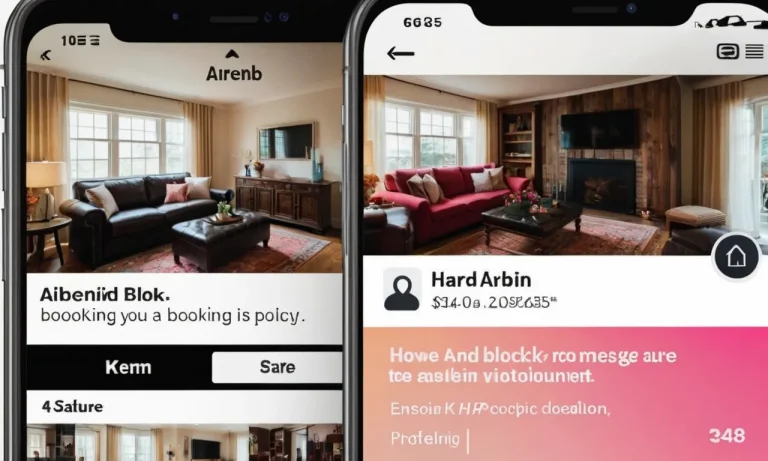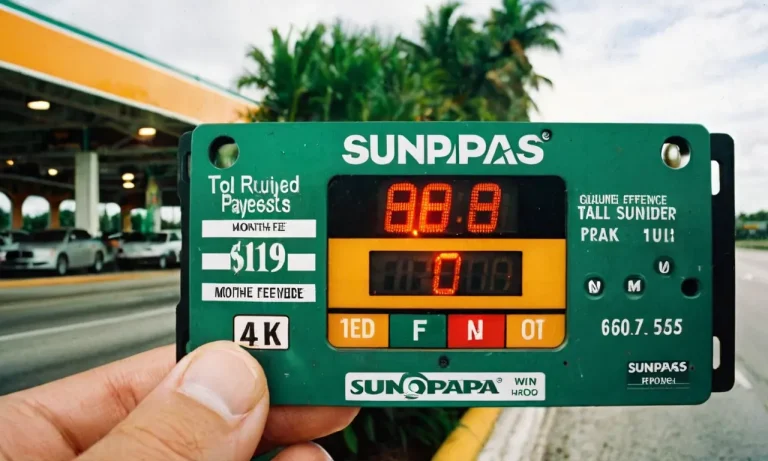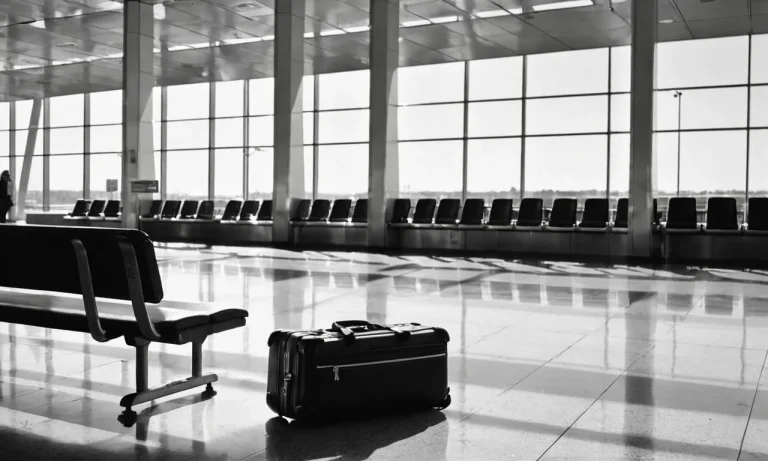Consequences Of Giving An Uber Driver A Bad Rating
Getting picked up and dropped off in a safe, timely manner is key when using a ridesharing service like Uber. As a passenger, you have the ability to rate your driver to reflect the quality of service received.
If you’re short on time, here’s the quick answer: Giving an Uber driver a rating of 3 stars or below can lead to them being deactivated from driving on the platform if they consistently receive low ratings.
In this comprehensive guide, we’ll explore what exactly happens when passengers give bad Uber driver ratings, how many low ratings it takes to get a driver deactivated, whether ratings can be appealed, as well as tips to avoid leaving unfair negative ratings.
What Qualifies as a ‘Bad’ Uber Rating
1-2 Stars: Extremely Poor Service
When you give an Uber driver a rating of 1 or 2 stars, it means that you experienced extremely poor service. This could include things like the driver arriving late, taking a longer route, driving recklessly, or being rude and unprofessional.
It’s important to note that giving a low rating should be reserved for serious issues, as it can have significant consequences for the driver.
According to Uber’s official website, drivers who consistently receive low ratings may face temporary deactivation or even permanent removal from the platform. This is done to ensure the safety and satisfaction of passengers.
3 Stars: Below Average Service
A rating of 3 stars indicates that you received below average service from your Uber driver. This could mean that the driver was punctual and drove safely, but there were some minor issues that affected your overall experience.
These issues could include things like a lack of cleanliness in the vehicle, poor navigation skills, or a lack of friendliness.
It’s important to provide constructive feedback in your rating when giving a 3-star review. This helps the driver understand what they can improve upon and can contribute to their growth as a driver.
4 Stars: Acceptable Service
A 4-star rating signifies acceptable service from your Uber driver. This means that the driver met your expectations and provided a satisfactory experience. They may have been punctual, followed the recommended route, and displayed professionalism throughout the ride.
While a 4-star rating is generally positive, it’s worth noting that it can still have an impact on the driver’s overall rating. Uber encourages passengers to rate drivers based on their individual experience and not to automatically give a 5-star rating unless the service was truly exceptional.
5 Stars: Excellent Service
A 5-star rating is reserved for drivers who provide excellent service. These drivers go above and beyond to ensure a safe, comfortable, and enjoyable ride for their passengers. They may offer amenities such as water or phone chargers, engage in friendly conversation, or provide helpful recommendations.
It’s important to recognize and appreciate exceptional service by giving a 5-star rating. This not only encourages the driver to continue providing great service but also helps other passengers make informed decisions when choosing an Uber driver.
Consequences of Low Uber Driver Ratings
Risk of Deactivation
Uber drivers with low ratings face an increased risk of being deactivated from the platform. According to Uber’s guidelines, drivers must maintain a minimum average rating of 4.6 stars. If a driver’s rating falls below this threshold, they will receive a warning from Uber.
If the rating does not improve within a set period of time, Uber may deactivate the driver’s account.
Deactivation can be devastating for drivers who rely on Uber as their main source of income. Once deactivated, drivers lose access to the Uber app and can no longer accept trip requests. Getting reactivated is challenging and often requires taking steps like attending quality improvement courses.
Fewer Ride Requests
In addition to deactivation risks, low ratings mean drivers will get fewer trip requests. Uber’s algorithm is designed to prioritize matching riders with higher-rated drivers. So the lower a driver’s rating, the less likely they are to receive ride requests when the app is open.
According to Uber, drivers with ratings of 4.8 stars or higher get the most trips. Those in the 4.7 to 4.8 range get slightly fewer requests. Below 4.7 sees request volume decrease substantially. Being starved for trips can severely diminish earnings over time.
How Many Bad Ratings Before Deactivation
When it comes to giving an Uber driver a bad rating, many passengers wonder how many negative reviews it takes before the driver gets deactivated from the platform. While Uber does not disclose the exact number of bad ratings that can lead to deactivation, they have a system in place to monitor driver performance and ensure passenger satisfaction.
The Rating System
Uber’s rating system allows passengers to rate their drivers on a scale of 1 to 5 stars after each trip. This system is designed to provide feedback to drivers and help maintain a high level of service.
However, it is important to note that a single bad rating is unlikely to result in a driver’s deactivation.
Uber takes into account various factors when evaluating driver performance, including the average rating, the number of completed trips, and any reports of misconduct. This holistic approach ensures that drivers are not penalized unfairly for isolated incidents or occasional low ratings.
Threshold for Deactivation
While Uber does not disclose the specific threshold for deactivation, it is generally believed that a consistent pattern of low ratings and negative feedback is required for a driver to be deactivated.
This means that a single bad rating is unlikely to have a significant impact on a driver’s standing with the platform.
Uber understands that there can be instances where a passenger may have a negative experience that is beyond the control of the driver. Therefore, they take into consideration the overall performance and feedback history of the driver before making any decisions regarding deactivation.
Improving Driver Performance
Uber provides resources and support to help drivers improve their performance and maintain high ratings. They offer driver training programs, guidelines for providing excellent customer service, and tips for navigating traffic efficiently.
By investing in driver success, Uber aims to ensure a positive experience for both passengers and drivers.
It is worth noting that Uber takes reports of misconduct, safety violations, and serious customer complaints very seriously. In such cases, immediate action may be taken, even if the driver’s overall rating is relatively high.
Ensuring the safety and satisfaction of passengers is a top priority for Uber.
Ultimately, the goal of Uber’s rating system is to maintain a reliable and efficient transportation service. By using passenger feedback to monitor and improve driver performance, Uber strives to provide a positive and enjoyable experience for all users of the platform.
For more information on Uber’s driver rating system and policies, you can visit Uber’s official website.
Can Drivers Appeal Ratings or Deactivation?
Uber drivers are an integral part of the ride-sharing platform, providing convenient and efficient transportation for millions of users worldwide. However, just like any service, there may be instances where passengers leave a bad rating for their driver.
But what happens when a driver receives a negative rating? Is there any recourse for them to appeal or address the issue?
Appealing Ratings
While Uber does not have a specific appeals process for ratings, they do understand that mistakes can happen and take driver feedback seriously. If a driver believes that they have received an unjustified or unfair rating, they can provide feedback through the app or website.
Uber takes this feedback into account and may take appropriate action, such as removing the rating or providing additional training to the driver.
It’s important for drivers to remember that ratings are subjective and can be influenced by various factors, including passenger expectations, traffic conditions, and even personal circumstances. Therefore, it’s crucial for drivers to maintain a high level of professionalism and provide excellent service to minimize the chances of receiving negative ratings.
Deactivation Process
In some cases, a driver may be deactivated from the Uber platform due to consistently low ratings or serious violations of Uber’s community guidelines. Deactivation is a serious step taken by Uber to ensure the safety and satisfaction of both passengers and drivers.
Uber has a comprehensive review process in place before deciding to deactivate a driver. They consider multiple factors, including the driver’s overall rating, the frequency of low ratings, and any reports of misconduct or safety concerns.
If a driver is deactivated, they will receive a notification and may be provided with information on how to improve and potentially regain access to the platform.
It’s worth noting that Uber values driver feedback and is constantly working on improving their rating system and the overall driver experience. They regularly review and update their policies to ensure fairness and transparency.
It is always recommended for drivers to familiarize themselves with Uber’s guidelines and best practices to provide the best possible service to passengers and maintain a positive rating. Additionally, drivers can seek support from Uber’s driver support team if they have any concerns or questions regarding their ratings or deactivation.
Remember, maintaining a high rating as an Uber driver not only contributes to your overall success on the platform but also ensures a positive experience for passengers. So, keep providing excellent service and strive for customer satisfaction!
Tips to Avoid Unfairly Rating Drivers
Giving an Uber driver a bad rating can have consequences for both the driver and the rider. It can negatively impact the driver’s overall rating and ability to earn a living, while also affecting the rider’s future experiences with Uber.
To help avoid unfairly rating drivers, consider the following tips:
Consider Mitigating Circumstances
Before giving a driver a bad rating, it’s important to consider any mitigating circumstances that may have affected the ride. For example, was there heavy traffic or road construction that caused delays? Did the driver encounter any unforeseen challenges during the trip?
Taking these factors into account can help provide a fair and balanced rating.
Did you know that Uber drivers often have to deal with unpredictable road conditions and external factors that can impact the quality of the ride? By understanding these challenges, you can avoid unfairly penalizing drivers for circumstances beyond their control.
Provide Actionable Feedback
When leaving a rating, it’s helpful to provide specific and actionable feedback to the driver. Instead of simply giving a low rating without explanation, consider mentioning specific areas where the driver could improve.
This feedback can be valuable for drivers to understand what they can do better and ultimately enhance their service.
Sharing your experiences and suggestions in a constructive manner can go a long way in helping drivers improve their skills and provide better rides for future passengers.
Rate Shortly After Your Ride
One way to ensure a fair rating is to provide feedback shortly after your ride. This will help you remember the details of the trip more accurately and provide a more informed rating. Waiting too long to rate a driver may result in forgetting important details, leading to an unfair rating.
By rating your driver promptly, you can help maintain the integrity of the rating system and ensure that your feedback is fair and accurate.
Remember, giving a bad rating should be reserved for cases of truly unsatisfactory service. By following these tips, you can help avoid unfairly rating Uber drivers and contribute to a better experience for both drivers and riders.
Conclusion
At the end of the day, an Uber driver’s rating is their livelihood. While it’s important to provide accurate ratings when warranted, passengers should also be mindful that a few unfair ratings can negatively impact a driver’s ability to work.
The best practice is to rate drivers based solely on their service, not external factors out of their control. If you had an issue during your ride, first speak to the driver politely so they have a chance to address it before leaving lasting negative feedback.
This thoughtful approach creates a better experience for both parties.








